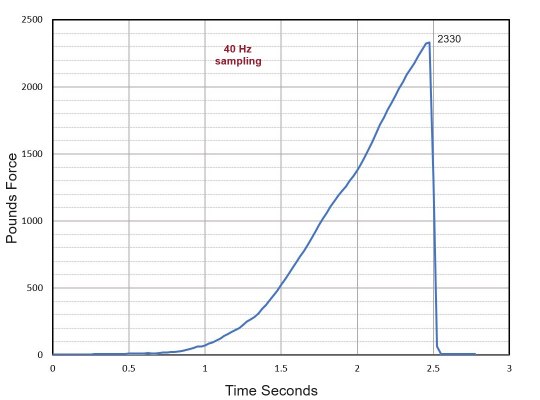Sewn Amsteel probably stronger than end-for-end splice
I
often sew Amsteel 12-braid Dyneema rope, especially when geometry
requires and there isn't room for a splice. I follow my own
strict rules, use 100 lb test braided UHMWPE braided fishing line for thread,
use lots of stitches (the rule for calculating stitches is 2x(strength
of bare cord)/(strength of thread)), and test with analogues. This
document describes one such test, with 1/8" Amsteel Blue (2500 lb
average
strength between eye bury splices). This is just an indication,
so I can proceed with my work.
Mariners use end-for-end splices to join ropes, because splices are
easy to do with lots of training, and because end-for-end splices
will run through pulleys easily (sewn ends tend to catch). But
end-for-end splices take a lot of rope, and are not that strong. Note
that the test described below is on just one strand of Amsteel, not a
loop. By comparison, if someone reports the strength of a
continous loop, the reported strength if for two strands in a loop,
inherently averaging a spliced and unspliced leg.
Below at left is the test set-up. A linescale 3 load cell is in the
case at the bottom of the page, and is connected to a permanent ground
anchor. The line at top is attached my jeep, which did the pull in
about 2 seconds, probably not ideal for reaching maximum strength. The
sampling was just 40 Hz, which may not have capture peak force.

The sewn connection broke at 2330 lbs, or ~93% of the reported average
strength of 2500 lbs. I have broken eye-to-eye spliced Amsteel in this
setup many times, and typically get about 2500 lbs for samples NOT
connected by seewn sections.



